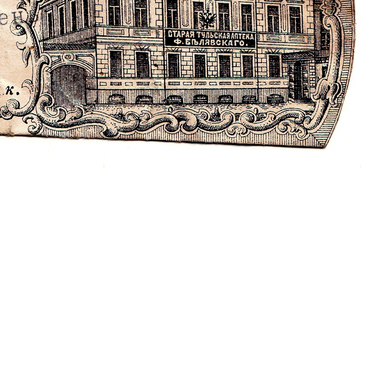Pharmacies of the 19th century sold not only medicines, cosmetics, but also various chemicals — what is now commonly called household chemicals: gasoline, kerosene, wood alcohol, soap, remedies for fleas, lice, and cockroaches. Therefore, one could buy blacking in the pharmacy of Ferdinand Belyavsky. Blacking, also known as shoe polish, was a popular leather shoe care product in the 18th–20th centuries. Not only did it protect the shoes from the effects of the external environment, but it also gave them shine.
In old books, the following recipe for shoe polish is given: beat up an egg with a little soot and dilute the resulting mixture in a few tablespoons of vinegar or beer. The result was a liquid shoe polish, which was used to lubricate the boots and shoes using a brush. Such shoe polish did not add shine to shoes — after drying, leather acquired a harsh whitish-matte color.
In the 18th century, the French introduced the fashion for highly polished shoes. Since then, new recipes for polishing agents began to appear. As a rule, they were based on beeswax and lanolin — animal wax, which was extracted from sheep wool. The black color was given by soot.
By the beginning of the 19th century, London (Great Britain) and Chicago (USA) became the main centers of production of shoe polish — blacking. From there, the blacking was transported to other countries in the form of a paste, which was then packed in oiled paper or round tin cans. There were many recipes for shoe polish. Every manufacturer wanted to to be different and get ahead of its competitors. That led to the appearance of a large number of original recipes. For example, the composition of the highest quality shoe polish of the 19th century included: fish oil — 42%, molasses — 20%, bone black — 20%, sulfuric acid — 9%, caustic soda — 9%.
For a long period, shoe polish was imported into the Russian Empire from abroad. The volume of deliveries reached 40 thousand poods (36 lb, 16.38 kg) per year or about 640 tons. The cost of deliveries was more than 500 thousand rubles — in the modern equivalent, it is half a billion. Most of all, German shoe polish was purchased, which was considered high-quality. From the German word gut — ‘good’ — the second name of this product appeared in Russia (blacking in Russian is ‘gutalin’).
Soon, for each pood, or 16 kg, of imported shoe polish, the state began to collect a fee of 2 rubles 40 kopecks, and as a result, the import of blacking soon decreased, however, Russian manufacturers started to appear.
The exhibition presents a shoe polish tin box produced in France.



